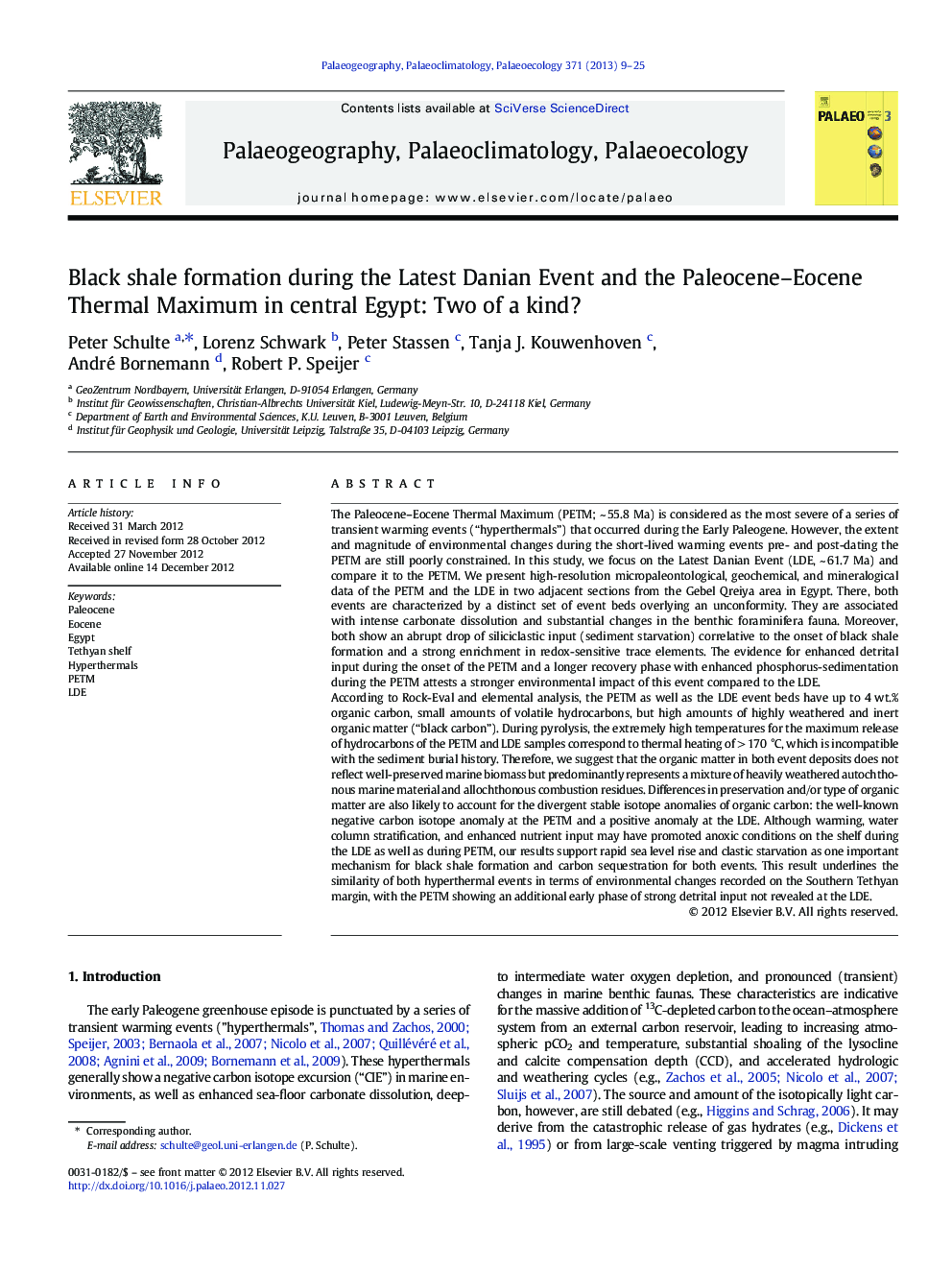| کد مقاله | کد نشریه | سال انتشار | مقاله انگلیسی | نسخه تمام متن |
|---|---|---|---|---|
| 4466637 | 1622215 | 2013 | 17 صفحه PDF | دانلود رایگان |

The Paleocene–Eocene Thermal Maximum (PETM; ~ 55.8 Ma) is considered as the most severe of a series of transient warming events (“hyperthermals”) that occurred during the Early Paleogene. However, the extent and magnitude of environmental changes during the short-lived warming events pre- and post-dating the PETM are still poorly constrained. In this study, we focus on the Latest Danian Event (LDE, ~ 61.7 Ma) and compare it to the PETM. We present high-resolution micropaleontological, geochemical, and mineralogical data of the PETM and the LDE in two adjacent sections from the Gebel Qreiya area in Egypt. There, both events are characterized by a distinct set of event beds overlying an unconformity. They are associated with intense carbonate dissolution and substantial changes in the benthic foraminifera fauna. Moreover, both show an abrupt drop of siliciclastic input (sediment starvation) correlative to the onset of black shale formation and a strong enrichment in redox-sensitive trace elements. The evidence for enhanced detrital input during the onset of the PETM and a longer recovery phase with enhanced phosphorus-sedimentation during the PETM attests a stronger environmental impact of this event compared to the LDE.According to Rock-Eval and elemental analysis, the PETM as well as the LDE event beds have up to 4 wt.% organic carbon, small amounts of volatile hydrocarbons, but high amounts of highly weathered and inert organic matter (“black carbon”). During pyrolysis, the extremely high temperatures for the maximum release of hydrocarbons of the PETM and LDE samples correspond to thermal heating of > 170 °C, which is incompatible with the sediment burial history. Therefore, we suggest that the organic matter in both event deposits does not reflect well-preserved marine biomass but predominantly represents a mixture of heavily weathered autochthonous marine material and allochthonous combustion residues. Differences in preservation and/or type of organic matter are also likely to account for the divergent stable isotope anomalies of organic carbon: the well-known negative carbon isotope anomaly at the PETM and a positive anomaly at the LDE. Although warming, water column stratification, and enhanced nutrient input may have promoted anoxic conditions on the shelf during the LDE as well as during PETM, our results support rapid sea level rise and clastic starvation as one important mechanism for black shale formation and carbon sequestration for both events. This result underlines the similarity of both hyperthermal events in terms of environmental changes recorded on the Southern Tethyan margin, with the PETM showing an additional early phase of strong detrital input not revealed at the LDE.
► Multiproxy study of the Latest Danian Event and the Paleocene–Eocene Hyperthermal Event
► Deposits of both hyperthermal events include a basal black shale sequence.
► Rapid sea level rise as one important mechanism for black shale formation
► Black shale formation may have promoted carbon sequestration during hyperthermals.
Journal: Palaeogeography, Palaeoclimatology, Palaeoecology - Volume 371, 1 February 2013, Pages 9–25